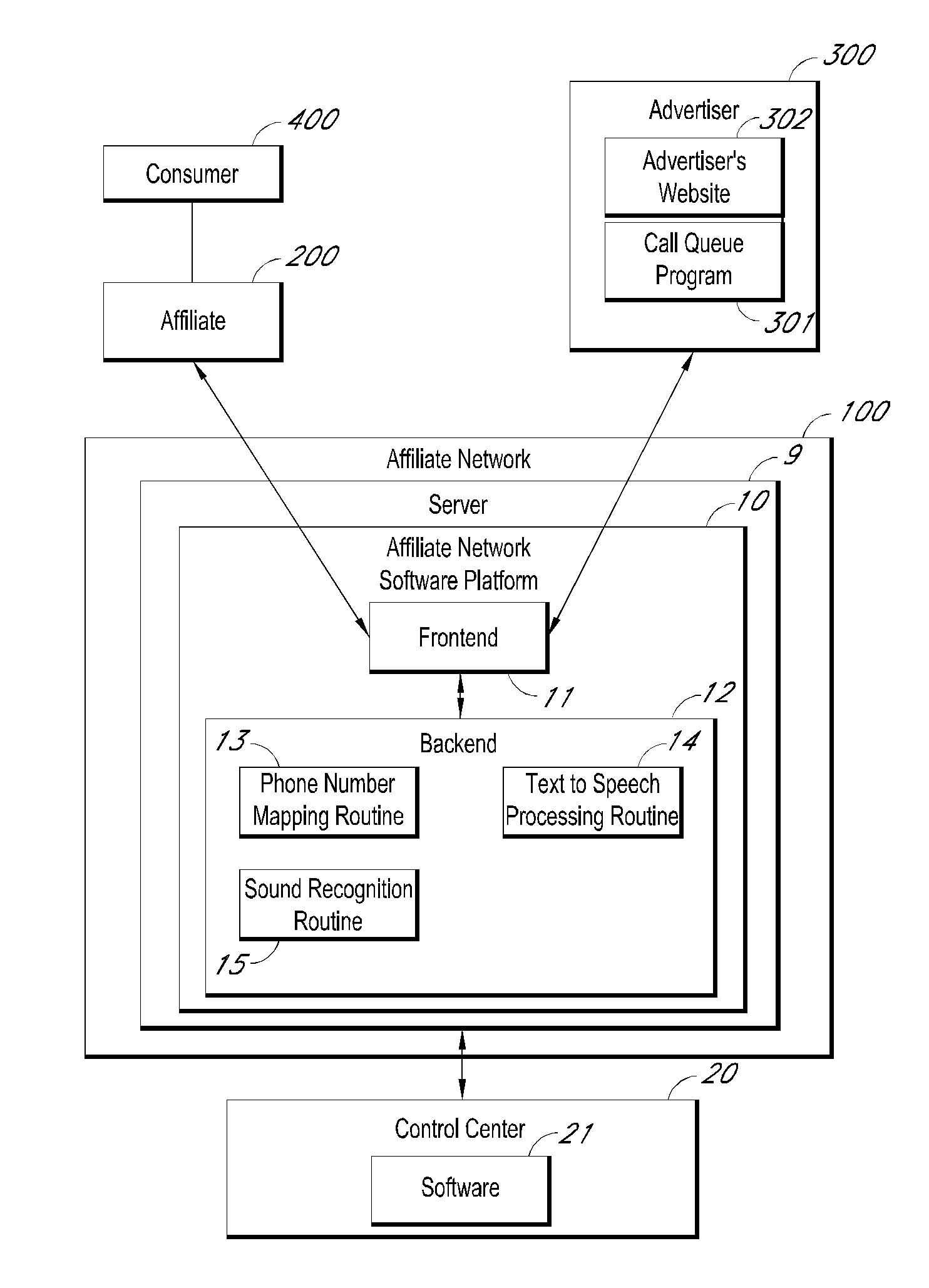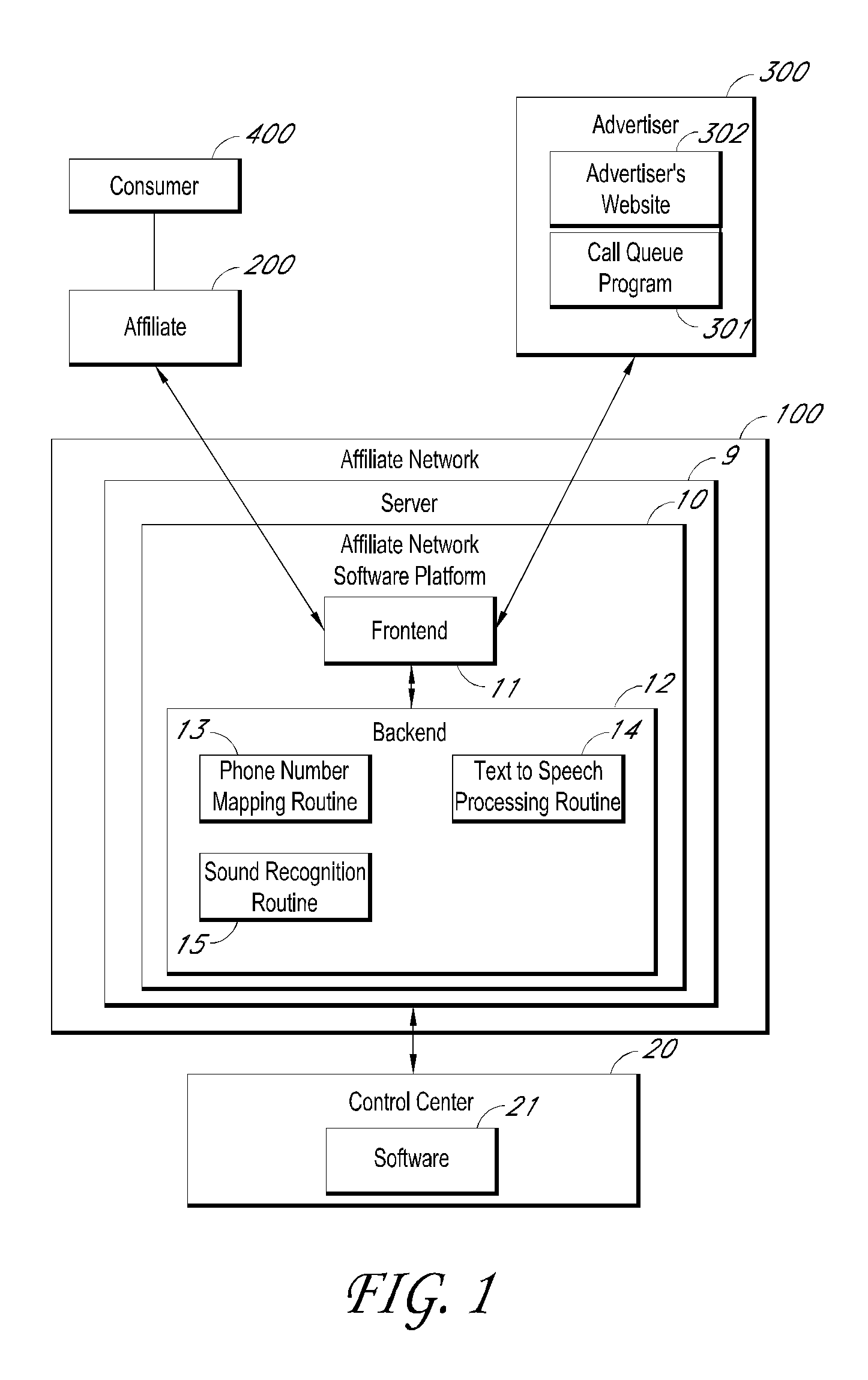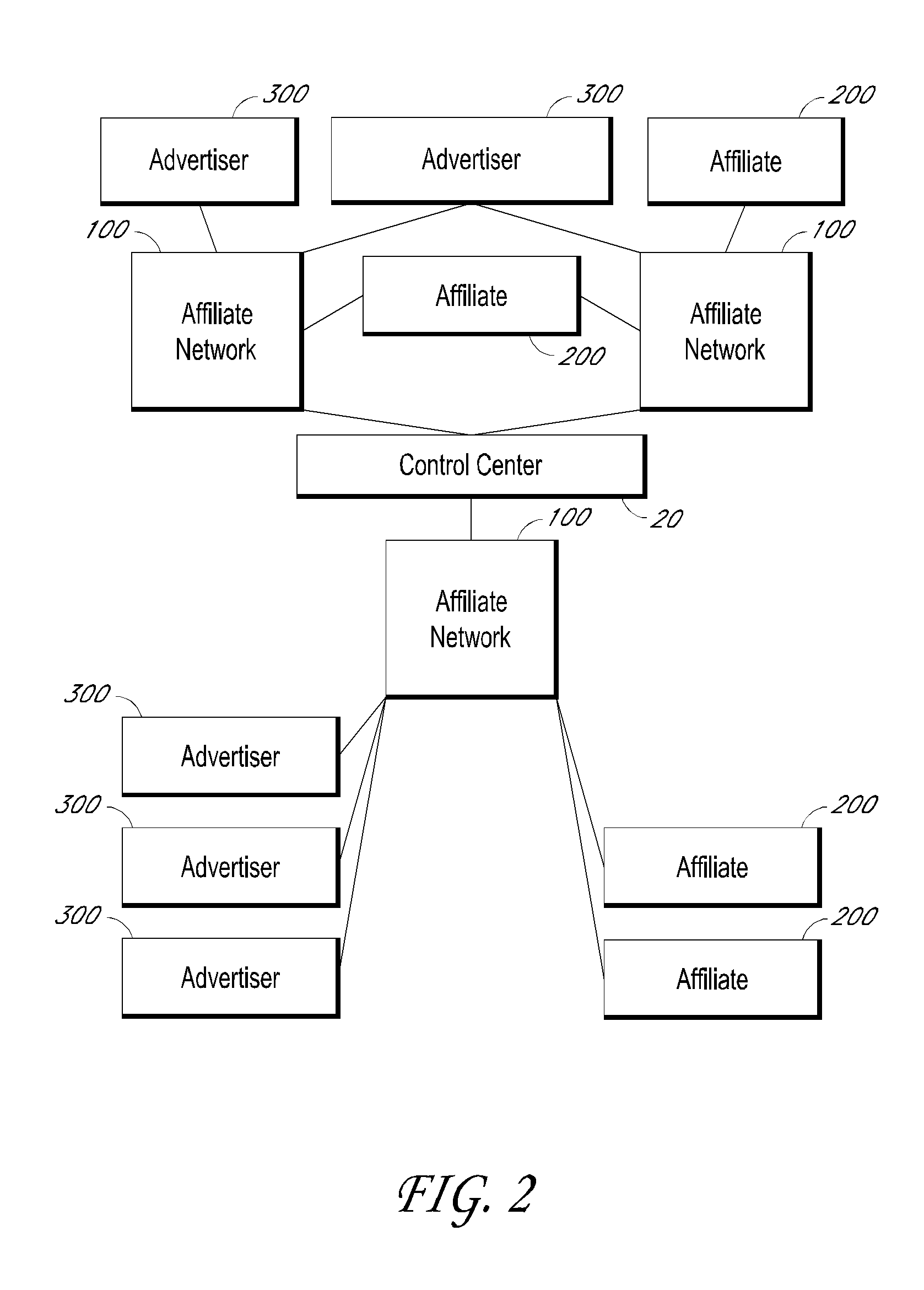Methods and systems for routing calls
a technology of routing and call, applied in the field of communication tracking and processing, can solve the problems of user losing interest in buying the product, users are also wary of sending their telephone number to an advertiser using these types of dialogue boxes, and foregoing conventional solutions are not well received by
- Summary
- Abstract
- Description
- Claims
- Application Information
AI Technical Summary
Benefits of technology
Problems solved by technology
Method used
Image
Examples
second example embodiment
[0534]FIGS. 67-72 depicts a second example embodiment of the system where a Newspaper, The News Press, is interested in increasing their subscription through an online advertising campaign by driving call traffic to their call center. The example embodiment below describes how the Advertiser 300, The News Press, creates a campaign and makes the campaign available to publishers / affiliates 200. The campaign created in this example is modified from the first example to illustrate a second example embodiment of campaign creation. The advertiser uses Custom RingPools in this embodiment to track the phone calls driven by each advertisement.
[0535]FIGS. 67 through 72 illustrate example workflows of operation of the example PM system 1005 discussed above. Process states are listed on the left and elements of the operating environment of FIGS. 67-72 are listed across the top.
[0536]In this example below, the Advertiser 300, The News Press, previously registered and created an account in the sy...
third example embodiment
[0604]FIGS. 73-74 depicts another example embodiment of the system. This example embodiment builds upon the Newspaper Advertiser, The News Press described above. In that example, a publisher participating in the campaign by displaying ads on their website. In this example embodiment, a media buyer participating in the campaign purchases keywords on search sites and Search RingPool phone numbers are used.
[0605]In the example below, the News Press (Advertiser 300) previously registered and created an account in the system database 900. One or more publishers / affiliates 200 created their respective accounts in the system database 900. The News Press created an advertising campaign “2011 Sale” as described above in example two. Further, in the example below, the process steps of the advertiser and / or publishers / affiliates accessing the system and logging in are not shown (see first example for an embodiment of these steps).
[0606]State 1 of FIG. 73. A media buyer who has applied for the ...
PUM
 Login to View More
Login to View More Abstract
Description
Claims
Application Information
 Login to View More
Login to View More - R&D
- Intellectual Property
- Life Sciences
- Materials
- Tech Scout
- Unparalleled Data Quality
- Higher Quality Content
- 60% Fewer Hallucinations
Browse by: Latest US Patents, China's latest patents, Technical Efficacy Thesaurus, Application Domain, Technology Topic, Popular Technical Reports.
© 2025 PatSnap. All rights reserved.Legal|Privacy policy|Modern Slavery Act Transparency Statement|Sitemap|About US| Contact US: help@patsnap.com



